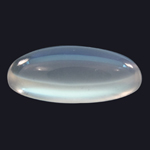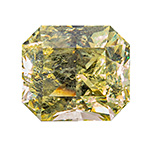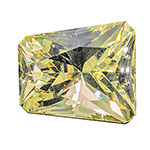Orthoclase
Member of Feldspar Group
Feldspars form complex isomorphous series between the endmembers albite and anortite on the one hand and the endmembers albite and orthoclase on the other hand. Members of the albite-anortite series are summed up under the term plagioclase. Members of the albite-orthoclase series are termend alkali feldspars.
Classical moonstones are orthoclase feldspars.

In the gem trade one occasionally encounters yellow, transparent orthoclase, mostly from Madagascar


Origin of name: originally named orthose by French mineralogistRene Just Haüy in 1801, after Greek ὀρθός orthos, meaning "straight" or "right" in allusion to the fact that orthoclase has two cleavage directions at right angles to each other. Haüy identified the mineral as felsdpar but did neither state the type locality nor its composition.wies das Mineral als Feldspat aus, nannte jedoch weder Typlokalität noch Zusammensetzung.
In 1823 it was renamed orthoclase (from ὀρθός orthos see above and κλάσις klasis meaning cleavage or fracture) by German mineralogist ohann Friedrich August Breithaupt.
Synonyms and trade names: none
Can be confused with: with other transparent yellow gems like citrine, scapolite, beryl, chrysoberyl and yellow sapphire
Localities: orthoclase is petrogenetic (rock forming) and one of the most common minerals. However, gemmy orthocalse is very rare and almost exclusively found in Madagascar.
Handling: orthoclase cleaves perfectly in two directions and is quite brittle. Thus it and must be handled and worn with care. Sensitibve to heat, acids and brines. Do not clean ultrasonically!
Worth knowing: orthoclase is the reference stone for hardness 6 on Mohs scale of hardness
 Deutsch
Deutsch